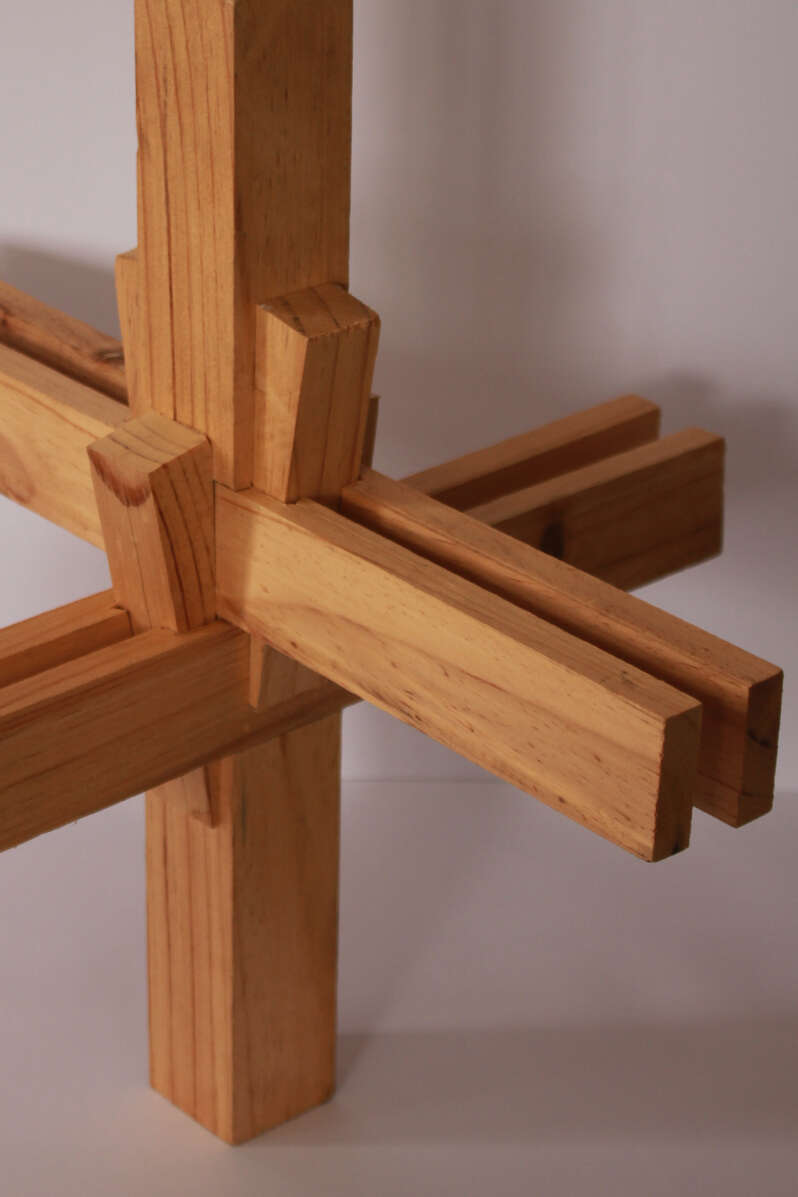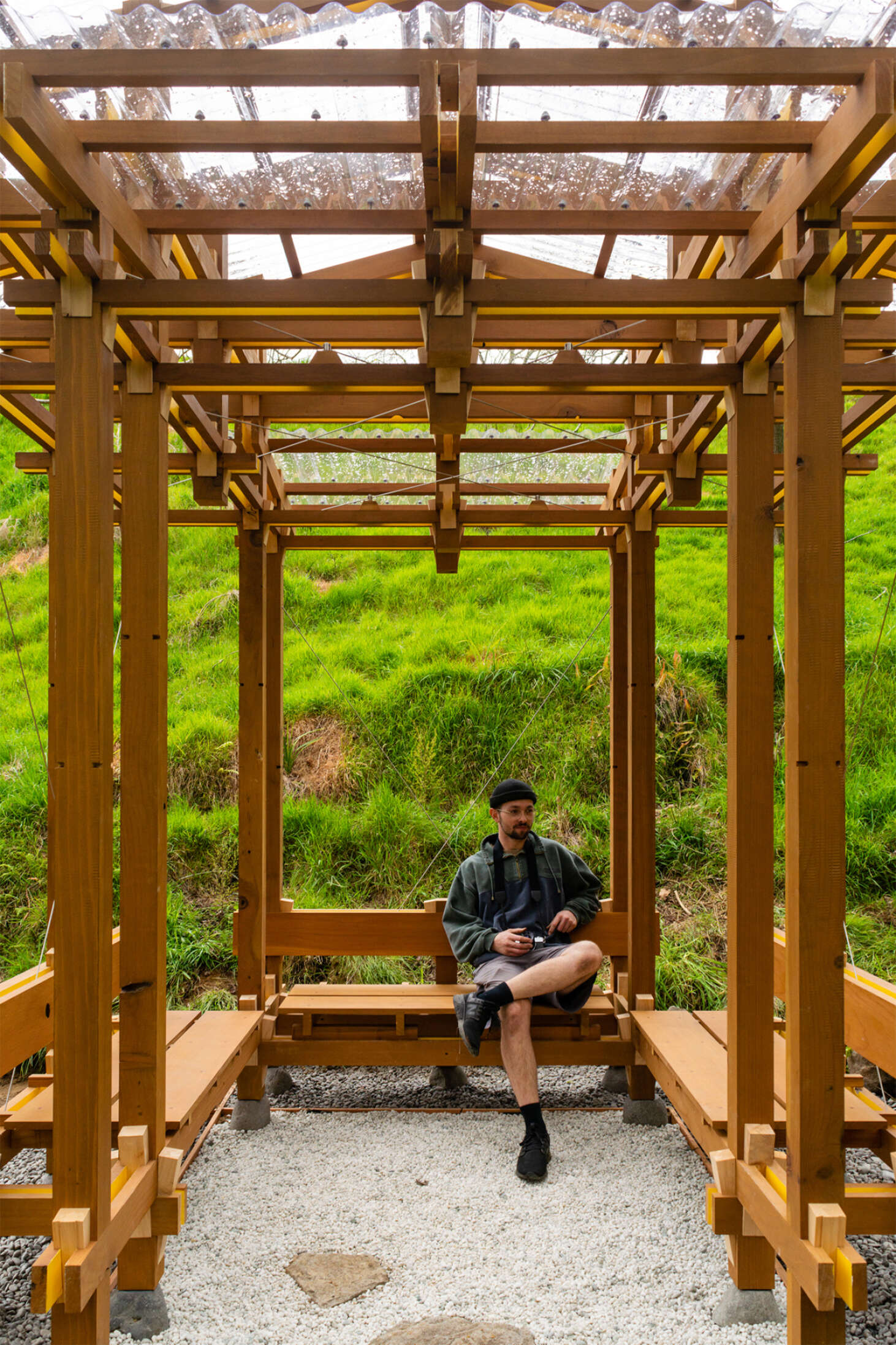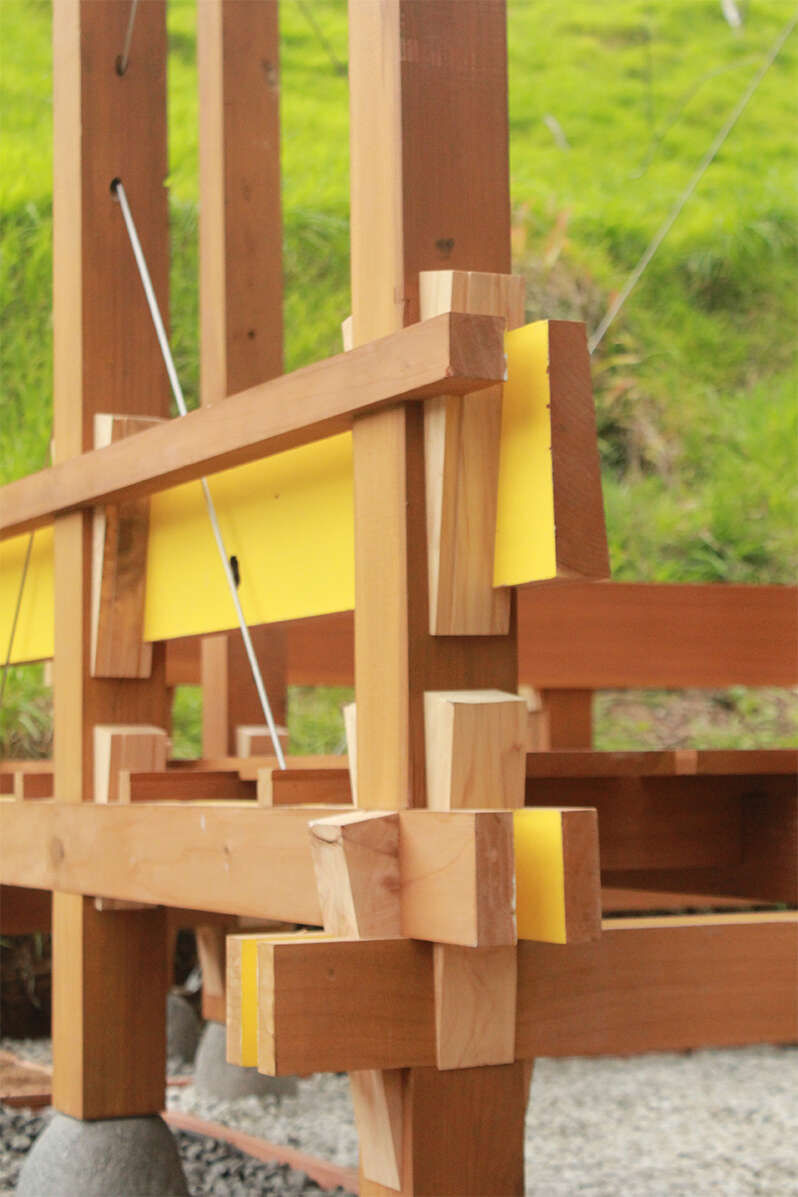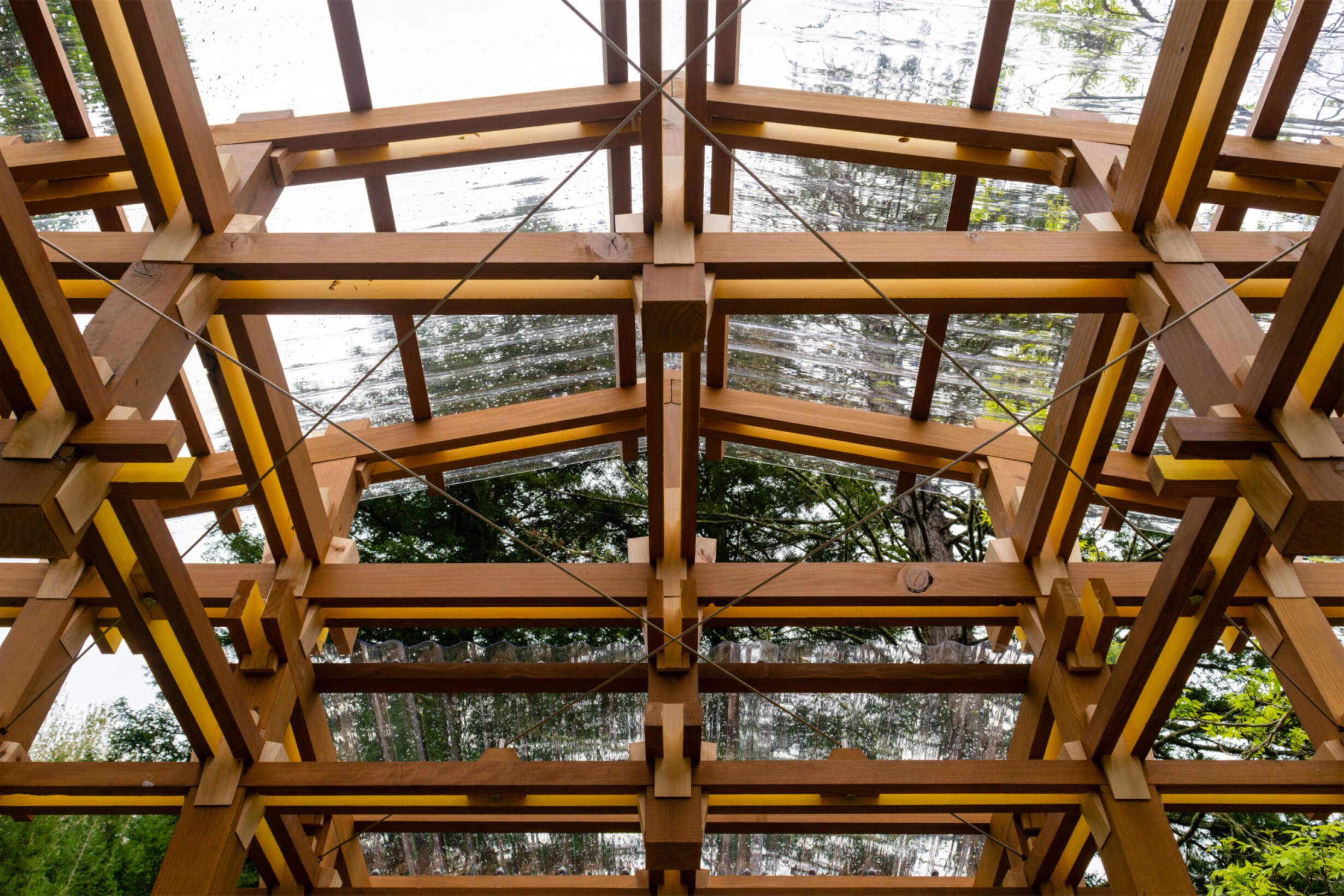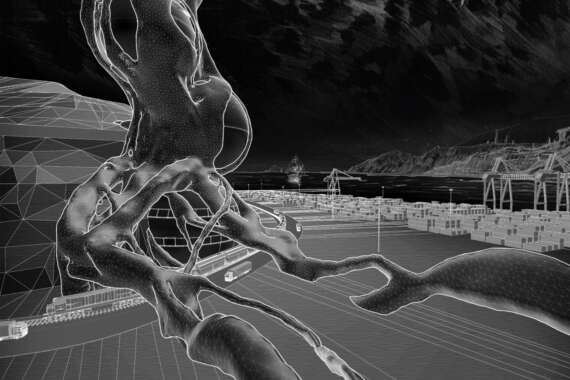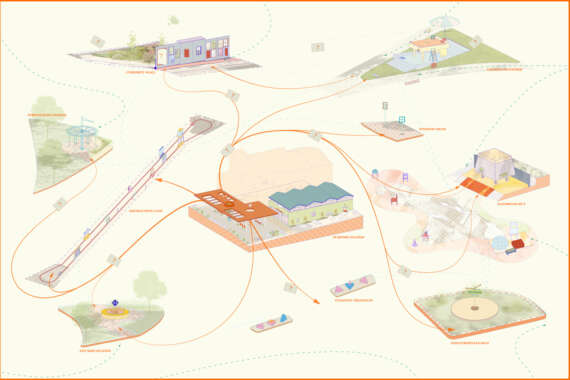Wood, Wedges, Joints, and Jigs: CNC Milling a Pavilion with Low Grade Timber
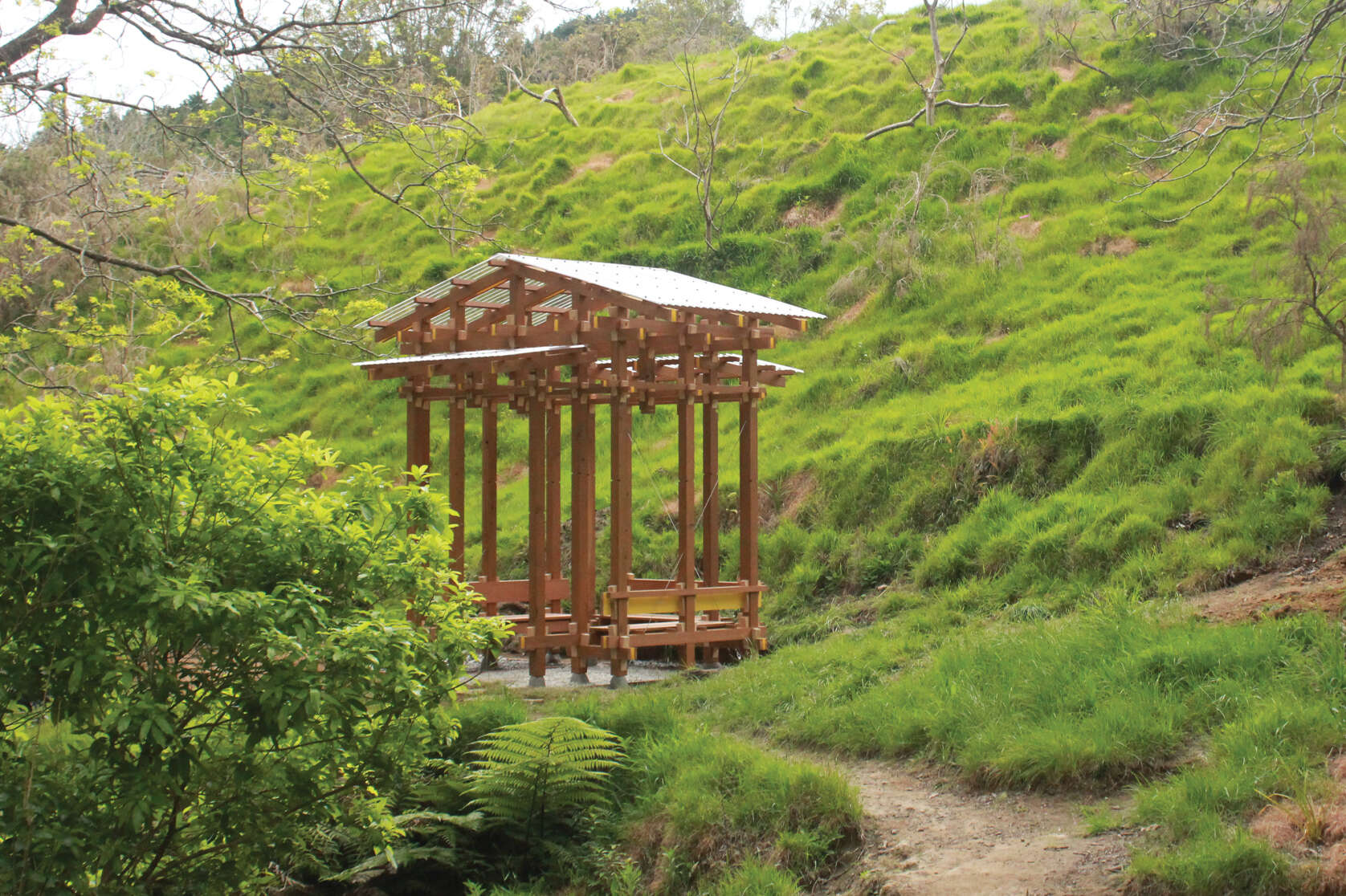
This thesis aims to develop a methodology for the Computer Numerically Controlled (CNC) fabrication of a timber structure using relatively low grade, unstable timber. It investigates both how to design a structure that can deal with the use of unstable timber and the processes required to use CNC milling techniques on unstable timber. The thesis aims to build on the learnings of previous theses from the School in this field of research, developing the processes required for the fabrication of traditional timber joinery using CNC milling. In doing so, the use of CNC milling to create timber joinery can be better utilised in becoming a more widely applicable fabrication method, such as in situations where material options are limited. As part of this thesis, an application of this fabrication method has been tested at Summerhill Farm in Papamoa through the construction of a small timber pavilion.








